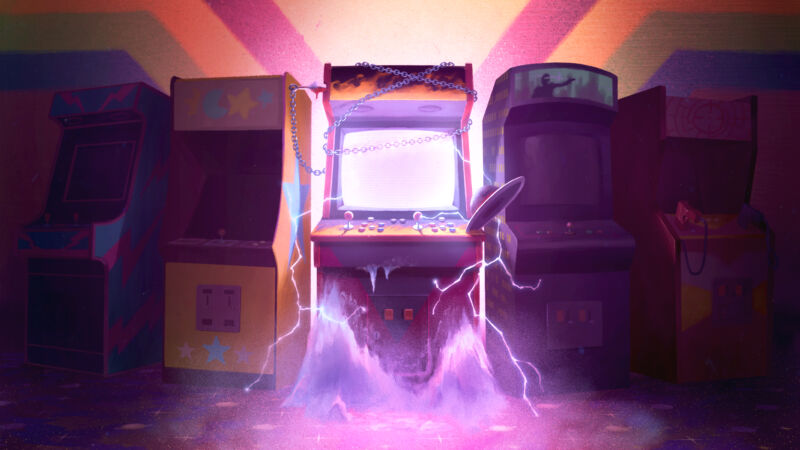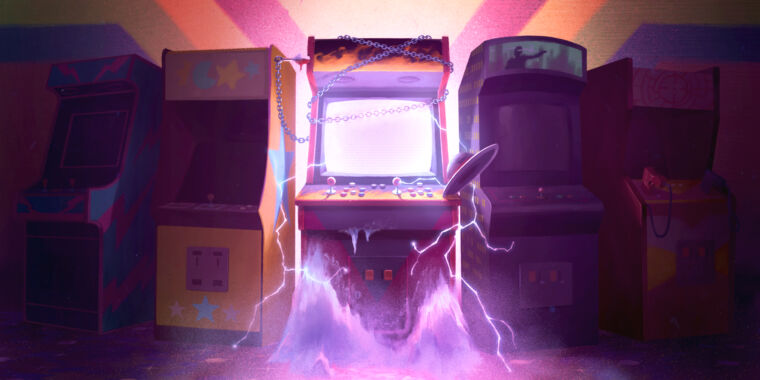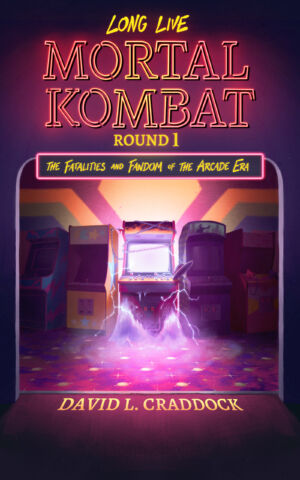
Nitin Bhutani was bored. It was the fall of 1992, and he was hanging out with friends between classes where he attended college in Long Island, New York. The group had two hours to kill. Bhutani proposed they go to the student rec center and play some of the pinball and arcade games there. Brown-skinned with dark, slicked-back hair, he looked for any excuse to get away from classrooms and play games. Truth be told, though, he was lukewarm toward his own suggestion. He and his boys had played the rec center’s handful of coin-operated amusements to death. But it was either hit buttons or hit the books, so they moseyed over to the rec center.
To Bhutani’s surprise, a new cabinet stood among the ranks of games he had conquered. He watched the attract mode. When the game’s title flashed across the screen, something about it—the intentional misspelling, the golden lettering set against a red backdrop—caught his eye. A few other guys stepped up to play. One of them finished the match by firing a bolt of lightning at the other character that blasted his head apart in a spray of blood. Holy shit, he thought. “It just showed up one day. I see this game where people are chopping heads off and am like, ‘Oh my god. I gotta play this,'” he recalls.
Bhutani no longer needed to hunt for distractions between classes. In fact, classes had become the distraction. He was spending five to six hours a day playing Mortal Kombat, bouncing between the cabinet at the rec center and his local arcade. Facing off against computer-controlled opponents grew tiresome. He needed challengers who’d force him to get even better. “I try to tell people, when you were young and went to an arcade, it was always one on one,” he says.
His friends liked the game and played against him. Soon enough, however, Bhutani outranked them. They were wasting their money, and he was wasting his time fighting guys who weren’t pushing him to grow as a player.
That was when the rumors started. “When you play at certain arcades, you hear, ‘Hey, there’s a couple guys in such-and-such arcade who are good.’ You drive over there and see what’s going on,” explains Bhutani.
Factoring driving time and gasoline into his Mortal Kombat schedule, Bhutani made a habit of piling into his car with friends and seeking competitors. He’d usually beat them, and one of three outcomes would occur: They would swear up a storm and stomp out of the arcade, try to fight him, or show him deference and ask to run with his crew. No matter how things went down, Bhutani planted his flag in the soil of every game room he conquered. As he expanded his territory, he kept an ear open for rumors of better players. Then he’d travel to their area and beat them, too. “That’s how it was back then,” he says of how word-of-mouth made him aware of fresh meat. “There’s no computers, nothing like that. There’s beepers. What the hell are you gonna do? Beep somebody?”
While playing one day, Bhutani learned from a fellow MK addict that one of the best players in the scene took on all comers at an arcade in Westbury. Bhutani smirked. He’d heard that before. The other player was adamant: This wasn’t some mark. This guy was one of the developers who made the game, and he was unstoppable. Godlike.
“The guy who made the game?” Bhutani remembers saying. “Okay. Let’s go get a piece of him.”









